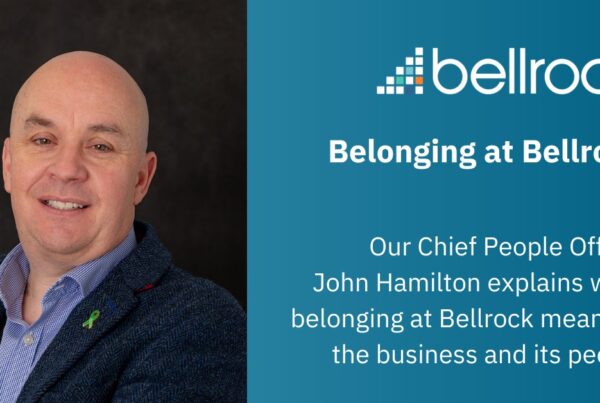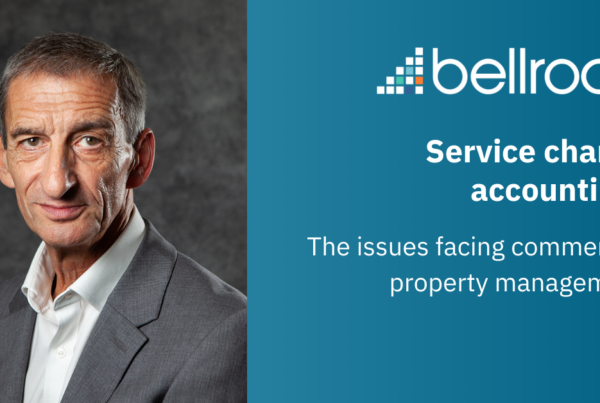Introduction
Both our personal and professional lives have changed as a result of the Covid-19 pandemic. We have all changed the way in which we run and manage our day to day activities, to the extent that things will probably never be quite the same again. Looking at what Covid-19 has meant from both a professional and working perspective, is complex, specifically we all had to rapidly re-design and implement new working practices consequently. This impacted us all through the first lockdown, as we traversed through a series of intermediate operating stages and finally, re-designing a new working environment. Technology has been an important enabler during these times. How do we continue to leverage and build upon what we have done to date? This paper aims to outline considerations on how technology can serve us even greater, both during, and after this global event.
The Internet of Things (IoT) & Supporting Technology
The application of IoT has been extensively documented well before Covid-19. However, well considered, varied, and aggregated IoT sensors can be of upmost support during these changing times. IoT offers a wide gambit of uses, which in turn can be utilised in stand-alone mode or integrated into other data sets to produce effective ‘data insights’. Below serves to outline three areas in which this relatively new technology can be applied.
Remote monitoring of space occupancy and the environment
In these new times, we need to ensure occupiers and users of our property assets are doing so safely and comfortably. Technology, and more specifically, IoT, can support this with the application of multiple sensory devices. These devices, which allow us to monitor humidity, light and movement, to name just a few, can be applied without a fixed electrical feed and operate totally wirelessly. We can aggregate these sensory inputs into a centralised rules/workflow engine to drive informed interventions and/or inform the need for further analysis. Taking this into context, the application of environmental sensors, linked to occupancy sensors and location sensors, allows us to remotely monitor how many people are in a building/area, how the local environment is affected and where the occupiers are. Added to this, we can also ensure distancing measures are being adopted, by measuring the location of building users, and tracking the way spaces are being navigated, to ensure adherence to space operating procedures.
Predictive failure
The power of IoT really comes into play when the sensory data is aggregated or interleaved alongside other property related data sets. This joined-up data allows us to create ‘actionable’ ‘data insights’, so we can control when potential onsite interventions need to take place. These multifaceted data insights can then form the basis of two key areas of action:
- We can feed these data insights into an analytics environment, which allows our data scientists and engineers to design and run complex data triage models to look for trends and operational data comparators to ‘predict’ a potential failure.
- Based upon the criticality of an asset and/or space, these insights can be pushed into a workflow algorithm, to automatically generate emergency reactive service interventions. This technological process, with the quantitative use of data, removes the need for onsite human triage and reduces face-to-face interaction.
This data driven approach to managing property related assets, enables property managers to control when and why external maintenance professionals access the building. This approach also supports less distraction and downtime during key times and improves cost efficiency for property related maintenance.
Human Interaction Management (HIM)
As we all know, the spread of Covid-19 relies upon reasonably close human interaction, which enables the virus to propagate through direct contact via infectious droplets, or indirect contact via contaminated objects or surfaces. To this end, there is a need, as of this time, to control the levels of human interaction to reduce possible transmission. Technology and IoT can play a key role in supporting this management, by providing data for control measuring and/or devices to aid the removal of physical human interaction. Examples of these are:
- Control Measuring – As described earlier, we can apply movement, location and/or heat sensors to count building users occupying a space or area at any one time. We can then take this count alongside the net internal area of the space/area in order to calculate if social distancing rules are being adhered to. Furthermore, by tracking movement around the building, with location and proximity sensors, we can track and enforce one-way, and other circulation policies, utilising the human traffic flow data created. Added to this, by leveraging environmental and M&E asset data, we can foresee potential asset failure and deploy resources to investigate and repair assets during non-peak operational periods.
- Physical Interaction Reduction – With the application of heat sensors or thermal imaging gates, we are able to measure the temperature of individual building users. We can then seek to discuss the findings, and potential removal, of subjects from the building, potentially reducing the chance of transmission. Added to this, the use of contactless entry systems, which can be retrofitted, reduces indirect contact and again reduces potential transmission.
There is not a ‘one solution fits all’ application available, the assessment of risk, with the control and interaction reduction measures available, will allow you to arrive at the right solution.
Health and Well-being of all workers (remote & office based)
During these unprecedented times, as many of us are operating with a disparate workforce, with resources being a mixture of office (or other) and home-based workers, effective management of morale is required. Technology is not the ‘silver bullet’ here but again, it can be leveraged as an enabler for data capture and knowledge transference. The environment in which we work is important in terms of productivity, as well as health and physical well-being, so having a central picture of how our teams and resources feel is important. The pointers below offer a sense of what we are doing here at Bellrock and what we see as a wider piece around workforce well-being:
- The emergence of well-being apps; the TotalMobile well-being app we use here at Bellrock helps us to gauge and support remote, site based and hybrid workers effectively. These tools offer a quick and very unobtrusive pulse check of wellbeing across all teams, and the data produced can offer insights into required working practice changes.
- Expanding on the detail above, the application of IEQ IoT sensors to monitor and control Co2, lighting, humidity, noise etc of office environments, ensures we are offering the best surroundings we can. This plays a key part in returning to the office, as our colleagues will see that monitoring and controlling the spaces we work in is of paramount importance.
- A wider adoption of eLearning technologies for blended and remote learning experiences, allows us all to stay informed and compliant. These types of tools can be used for multiple applications, such as:
- Remote desktop assessments, ensuring home workers are working safely
- The dissemination and tracking of policies and procedures, linked with quizzes to validate understanding
- Job Role related learning curriculums, ensuring we stay at the top of our game even whilst working remotely
- The increased use of organisational intranet/CMS systems. This enables remote and onsite workers to connect and access company news, policies etc, as well as support information sharing. We at Bellrock use an environment called Bellrock Buzz, which helps to virtually bring people and teams together.
The new working toolsets, supporting remote working and virtual interaction
With home working now the ‘new normal’, the requirement for robust, secure and reliable remote access to information and IT systems is greater more than ever. There should be sufficient capacity and redundancy to cope with the increased demand, and all ingress and egress points should be hardened and continuously monitored. So, what questions should we be asking ourselves:
Is my infrastructure ready to continue with this way of working?
Organisations should use this ‘new normal’ as an opportunity to re-assess business objectives and priorities, consolidate and integrate applications and IT systems. We should also look to centralise data processing and build out a resilient and secure operating environment to drive efficiency and productivity. By centralising data processing activities, we reduce ingress/egress points and therefore exposure to attack, reduce our hardware footprint, and reduce support and maintenance overheads. When considering the centralised approach, we should look to utilise cloud and web-based technologies, reducing the requirement for direct connections into the corporate network
Are these tools being used securely?
With the increase in remote working, the threats remain the same, but the risk is amplified due to increased exposure. To counter this, we should conduct thorough risk assessments, and any changes to our risk profile should be assessed and additional controls deployed if required. Web applications should use encryption to protect data in transit, have strict access controls enforced, have redundancy built in, be subjected to regular vulnerability scans and maintenance routines, and have a regime of penetration testing implemented. A robust change and configuration management process should also be implemented to prevent the risk of compromise due to misconfiguration. Alongside this, remote access to all corporate systems should be strictly controlled and monitored. Transactions should be audited, and any access control changes authorised by data owners. Data leak prevention policies should be enforced to protect against exfiltration of sensitive information.
Can I continue to support the use of these tools and help drive efficiency and improved productivity?
To ensure the availability of critical assets, remote monitoring tools covering connectivity, network infrastructure and critical assets should be configured. Key risk indicators should be agreed with business owners and alerting mechanisms configured to enable support staff to quickly action any issues. IT and security staff should be able to securely access assets for routine maintenance and troubleshooting. Privileged accounts should have layered controls and additional monitoring implemented. Existing processes should be reviewed to ensure their ongoing suitability. Finally, where possible, we should look to simplify the operating model to improve our user experience, drive efficiency and improve productivity. This change requires us to embrace a culture of connectivity and collaboration by utilising tools such as MS Teams to conduct face to face meetings, share content and communicate instantly.
Conclusion
The world is changing and the #NextNormal is upon us, and preparing for the paradigm shift required, to meet what will be the new demands, needs to start with immediacy. Technology plays a critical part in meeting these new demands, which will be a formulation of integrated, decentralised and secure operating environments. The technology utilised within these environments will impact our property assets, our local environment and the people who work with and around us.
Greg Davies
CTO, Bellrock Property & Facilities Management







